Substrate-Associated Plants
First up is Chestnut Oak, Quercus prinus. This species of acidophile is interesting because it is most abundant on the tops of dry hill tops. It’s leaf arrangement is alternate with an ovate shape and round toothed margins. The color of the leaf is a dark green and the texture is leathery. The fruits are shinny acorns with long peduncles attached. A weird thing about this plant is that the foliage begins as this pink color before changing to gray and finally settling on dark green.
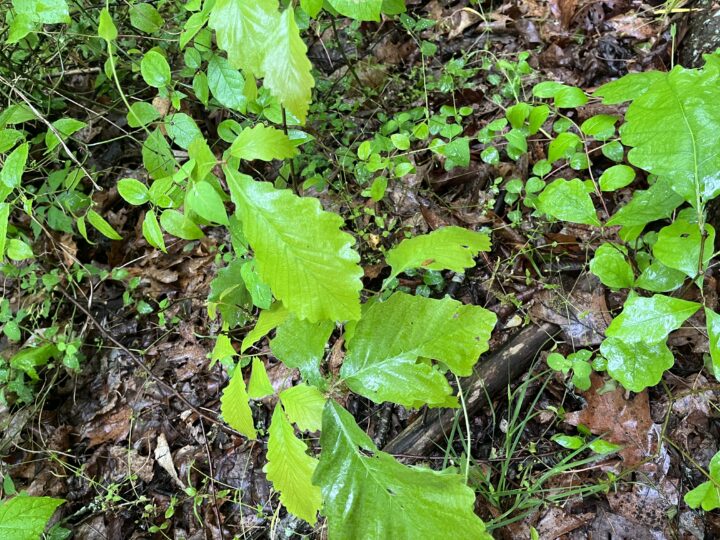
Chestnut Oak acidophile
Up next is Sourwood, Oxydendrum arboreum. The leaf arrangement is alternate with oblong leaves with finely toothed margins. The leaves are dark green and the flowers they produce are creamy white racemes. Fruits produced are capsules and a fun fact about the Sourwood is that it is the sole species of its genius and is not found anywhere else around the world.
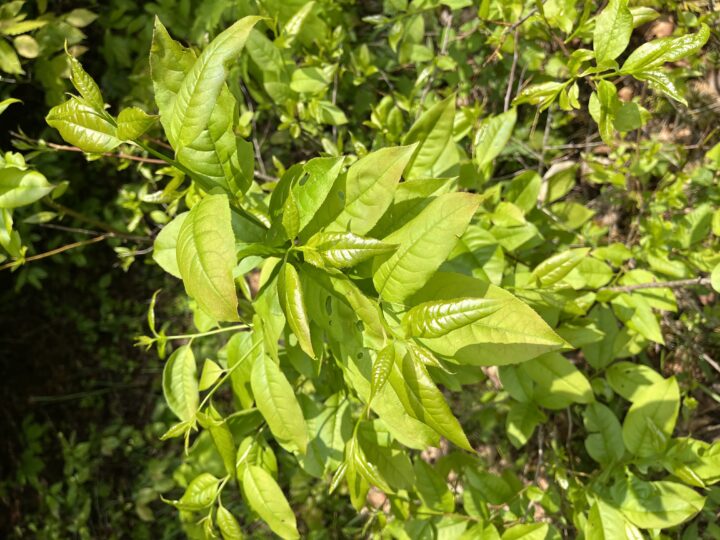
Sourwood tree acidophile
Following that is the Deer Berry, Vaccinium stamineum. The leaf arrangement is alternate with with oval shaped simple leaves with pointed tips. The leaves are yellowish green with a waxy or hairy texture especially on the underside of the leaf. It has hanging white bell shaped flowers. These give way to a spherical berry that is green and yellow with a slight purple color to them as well. The reason it is called a deer berry is simply because deer love to eat them.
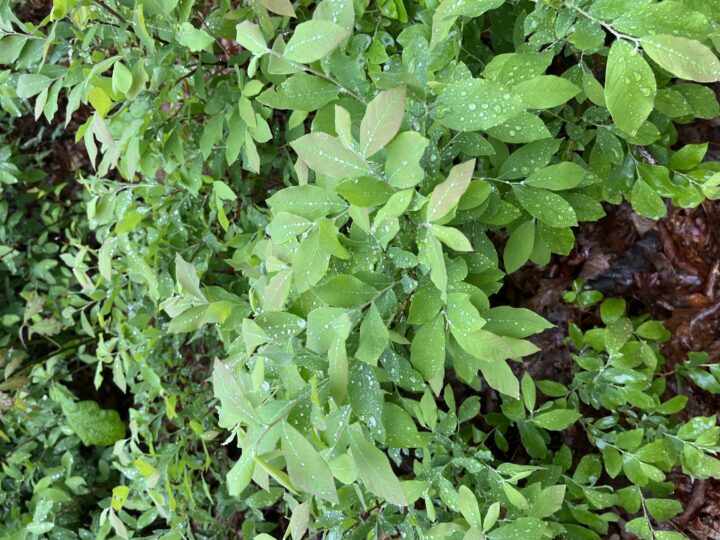
Deer Berry acidophile
Lasty of the acidophiles is the Eastern Hemlock, Tsuga canadensis. This tree not only does well in acidic environments but it also tends to do well in moist environments at the bottom of valleys so its distribution is much more extensive then lets say the other acidophiles listed. The leaf arrangement is opposite with needle shaped leaves tiny petioles and blunt ends. The leaves are a shiny green to yellowish color. These trees produce cones that are ovoid in shape. Fun fact native Americans used to use the inner bark of the trees as bandages to cover wounds.

Eastern Hemlock acidophile
Ferns
Up next is the ferns we were able to find on the trip. First up is the Christmas Fern, Polystichum acrostichoides. This fern is hemi dimorphic, pinnate-pinnatifid, and peltate indusium. The fronds are dark green, leathery in texture, and have tiny hairs on the underside of them. They produce light brown spores on the pinnae tip. The reason they are called Christmas Ferns is because pioneers used them to make Christmas wreaths.
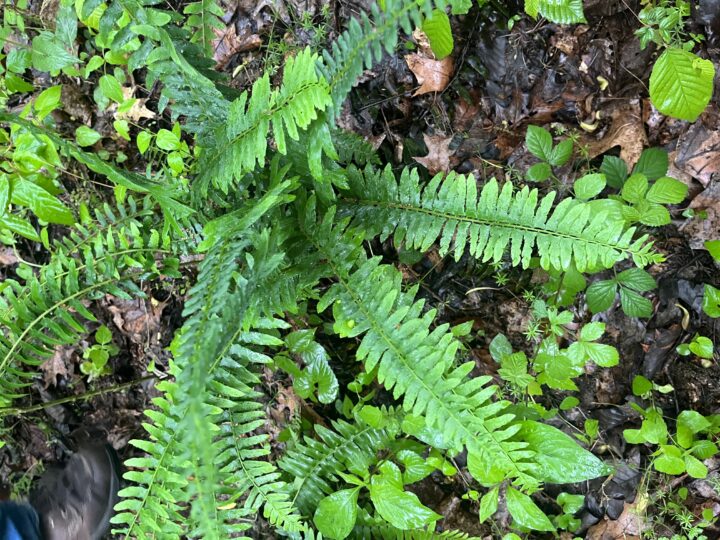
Christmas Fern
After that we have the Cinnamon Stick Fern, Osmundastrum cinnamomeum. This fern is holo dimorphic, simple, and cup shaped indusium. The fronds are light green to start then fall off and give way to brown stalks the texture of the leaves is coarse. Brown stalks contain the spores and resemble cinnamon sticks. Unfortunately they do not smell anything like cinnamon.
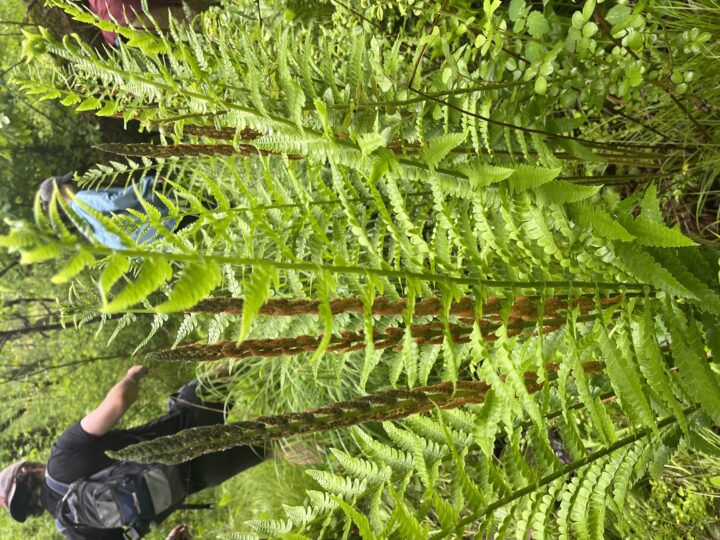
Cinnamon Stick Fern
Next we have the Maiden Hair Fern, Adiantum pedatum. This fern is monomorphic, pinnate, and has marginal false indusia. The fronds are light green with black branches. The false indusia comes from the sori being borne submarginally and being covered by relaxed flaps that look like indusia. There was a legend surrounding maiden hair that if someone could hold a branch of maiden hair without the leaves moving they were still a virgin. The maiden hair represented purity and innocence in folklore.
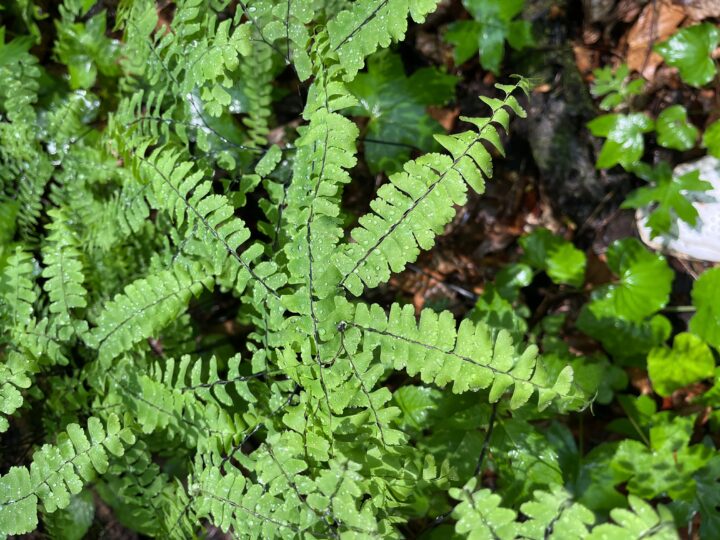
Maiden Hair Fern
Lastly we come to Interrupted Fern, Osmunda claytoniana. This fern is hemi dimorphic, pinnatifid, and conical indusium. The fronds are dark green but later turn dark brown giving way to the cylindrical clusters. It is called interrupted fern because of the gap left in the middle when the fertile portions fall off.
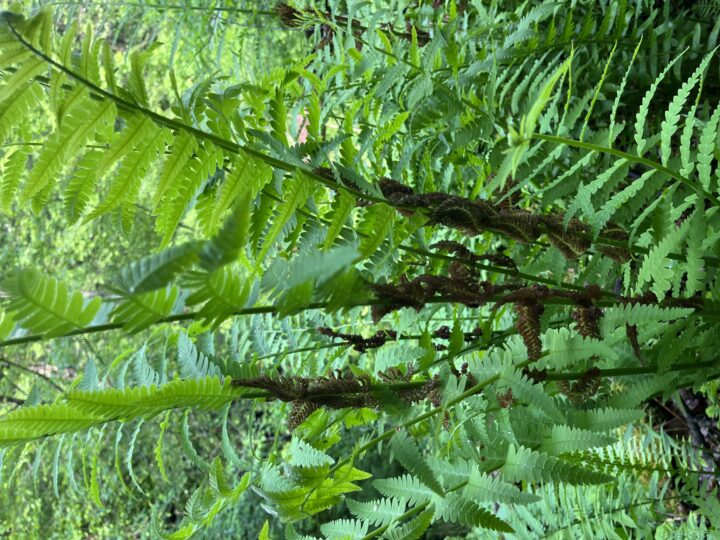
Interrupted Fern
Appalachian Gametophyte
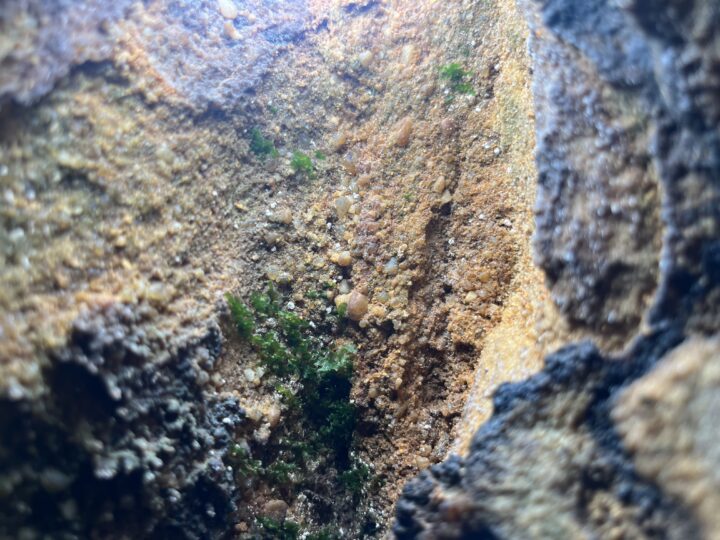
Appalachian Gametophyte
Here is really the star of the trip the Appalachian Gametophyte, Vittaria appalachiana. This is a plant we knew about well before going on the trip because of how strange and interesting it is. The Appalachian Gametophyte is rare in regards to the fact that it is a fern that doesn’t and really hasn’t ever been seen in a sporophyte stage. This is strange because you would think that a fern that can’t become a sporophyte is bound to die off. The Appalachian Gametophyte however persists through asexual budding of gemme or groups of cells that break off of the original plant and then itself becomes an independent clone of the original. This mechanism of reproduction is not wide spanning as gemme only can move over a very short distance due to its size being much bigger than that of spores. The three modes of dispersal posed for the Appalachian Gametophyte are that by wind, water, and animals. The ladder of these three being the funniest one with slugs actually being the mode of dispersal. Some evidence to support this limited dispersal claim is that the current distribution of the plant does not extend past the last glacial maximum even though there is plenty of habitable areas for it beyond the maximum that we know they would thrive in. How we know this is some of the gametophyte was transplanted to these places and did fine. In its current state I think it is safe to say that the Appalachian Gametophyte is reproductively isolated and that spore dispersal means would not sustain it. This is backed by the genomic evidence and somewhat by phylogenetic evidence found in Pinson and Schuettpelz’s, Unraveling the origin of the Appalachian gametophyte. The explanation as to why the gametophyte is only abundant in these certain areas is most likely that it once produced spores when the conditions were favorable but after the glacial movement the spores became extinct.
Invasive Species
The last talking point I had for this trip would be the invasive species we saw whilst we were there. The first of the two we documented was the Multiflora Rose, Rosa multiflora. The flowers are white with 5 heart shaped petals and it often grows as a shrub. It is native to eastern Asia and was introduced as an ornamental before further being used to prevent erosion by the US Soil Conservation Service. The reason this rose is now considered a weed though is due to the sheer volume at which it is able to reproduce. It is a shade-tolerant monoecious plant that ultimately takes up too much space, has not natural predators, and many vectors in which it is able to distribute its spawn. The best ways to get rid of it is to manually dig it out or treat with herbicide often which has to be done more than once.

Multi Flora Rose invasive species
Second and last invasive species on this trip we saw was Japanese Stilt Grass, Microstegium vimineum. The grass has asymmetrical leaves that are off-center with the stem, a silvery midrib down the leaves, and is smooth on both sides. This monocot is native to Eastern Asia and was believed to be introduced through its use of packaging porcelain. This species is considered one of the most damaging invasive species here in the United States due to its versatility in conditions in which it can thrive in. The best ways to get control the plant is to catch it before the seeds germinate in early flower stage. Hand pulling and moving during this time is highly effective when done at the right time. Chemical means are also available as well.
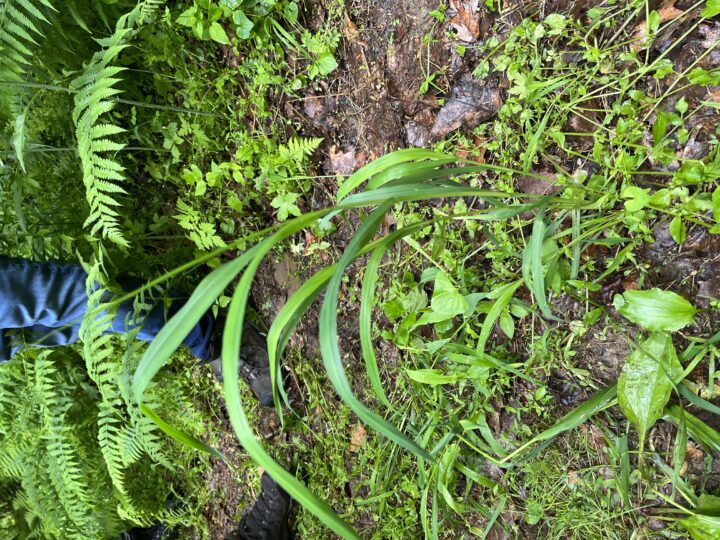
Japanese Stilt Grass invasive species
Citations
Reid, A., & O’Brien, R. T. (Eds.). (2019, July 2). New Yorkinvasive Species (IS) information. New York Invasive Species Information. https://nyis.info/invasive_species/japanese-stiltgrass/
Wenning , B. (2022, June 27). Multiflora Rose: An exotic invasive plant fact sheet. Ecological Landscape Alliance. https://www.ecolandscaping.org/07/landscape-challenges/invasive-plants/multiflora-rose-an-exotic-invasive-plant-fact-sheet/
